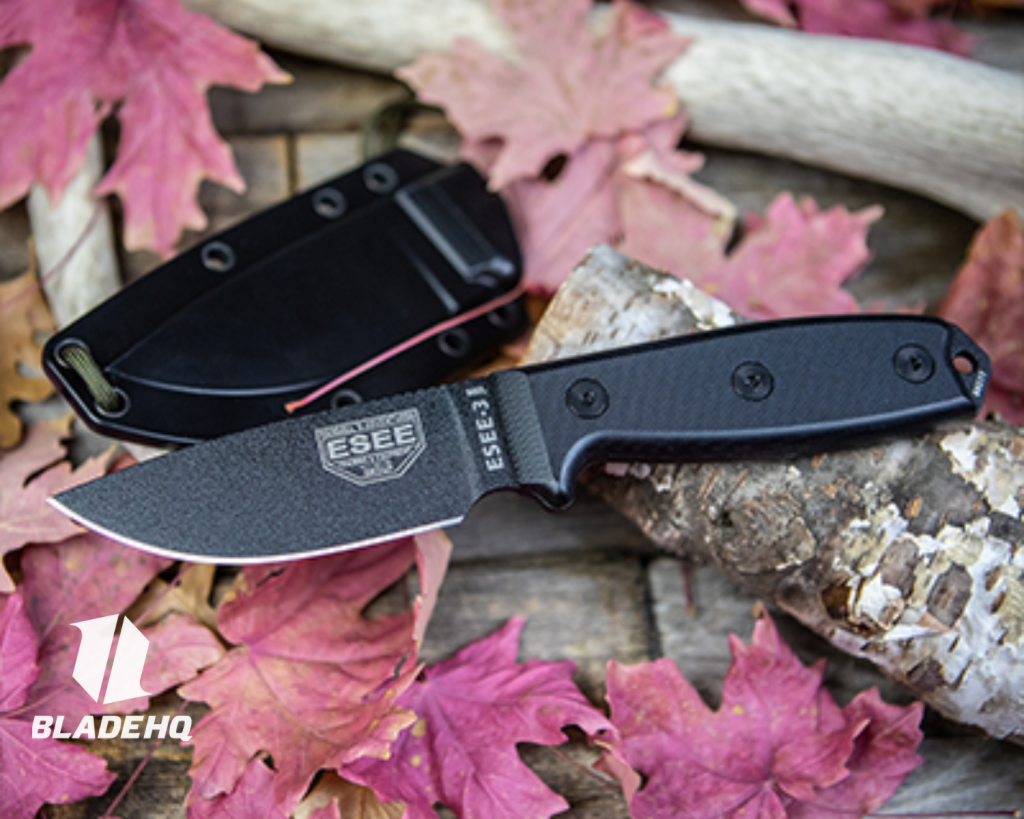
Hey there, blade fans! Let’s talk about knife sheaths. I know, I know—sheath talk doesn’t seem quite as sexy as superior steels or the construction of the knives themselves–-and that’s because, well, it kind of isn’t. But … it’s necessary.
When you care about knives, you want to protect your investment, or what’s the point? Knives are our friends, and we don’t hurt our friends. Besides, sheaths are also kind of cool looking, as well as practical.
Which brings us to:
What is a Sheath?
(For the newbies out there.)
Basically, it’s a knife cover to keep your blade sharp and safe, and so you don’t injure yourself, small children, and the family cat or dog. Call it what you want–-knife holster, scabbard, or cover–-you definitely need one if you have a fixed blade knife.
Do I Need a Knife Sheath?
Yes. I just said so.
Luckily, most fixed blade knives come with a sheath because knife companies know this, too. But a lot also depends on what kind of knife we’re talking about.
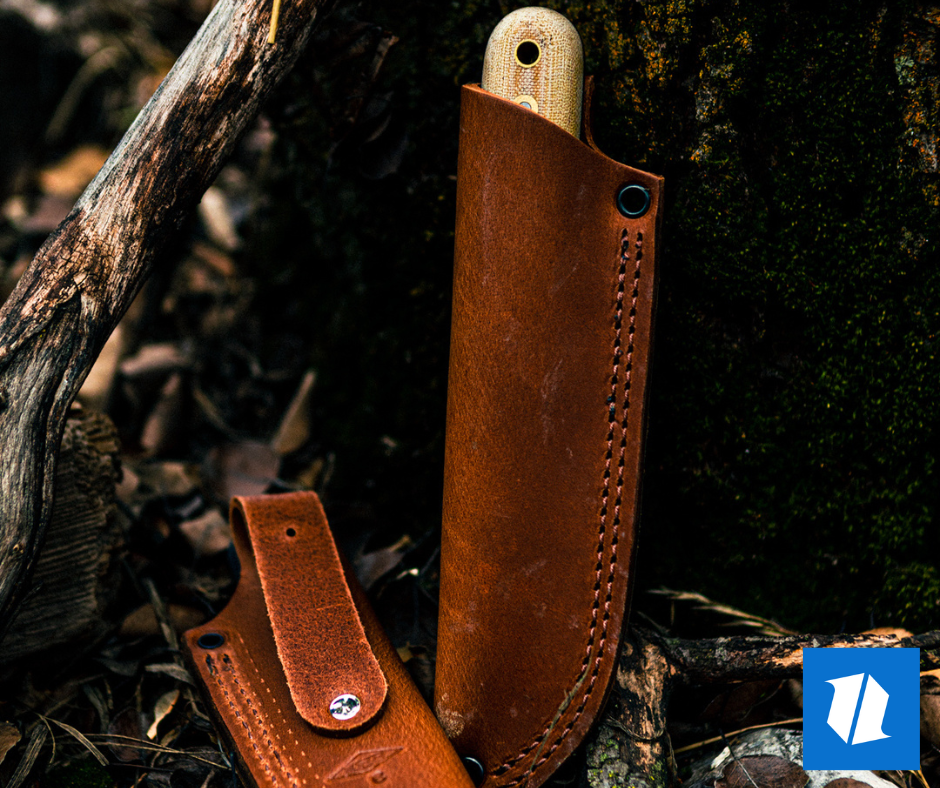
Obviously, you’re not going to carry your gigantic bowie knife around without a sheath. At least, not without causing a lot of damage. (The drywall perforations alone are enough to make me shudder.)
But people often don’t think about protecting their kitchen knives, for example. There they are, hand-forged by some German or Japanese master and you’re just letting them all rattle together in the kitchen drawer. Dulling each other. Ruining finishes. Clipping each other’s handles. My personal kitchen favorite we carry, Shun Knives, are ultra-thin for extreme sharpness and cutting power, but they’re gonna chip if you don’t take care of them. (Just send them my way, if you think you’ve taken on too much responsibility …)
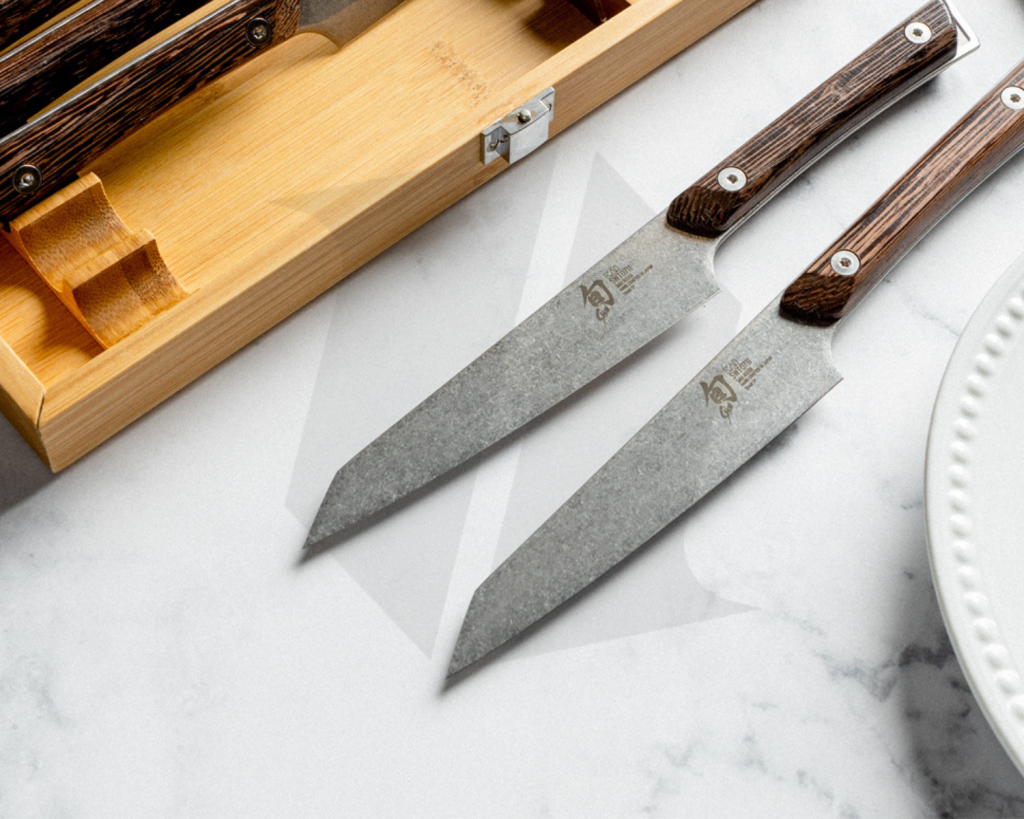
But moving away from kitchen knives, if you’re an avid outdoorsperson, you’re going to want the best protection available for your hunting knife, camping, or machete blade. There’s lots of grit and dust on the trail, working its way into lesser equipment and dulling your knife steel. You want to have a sheath with a good fit and one that keeps the moisture out. Not only moisture, but all the other particles that can damage your sharp beauty. Even though most companies will provide a sheath for your knife, some models are so popular you’ll find some excellent aftermarket sheaths available for those who enjoy a customized experience.
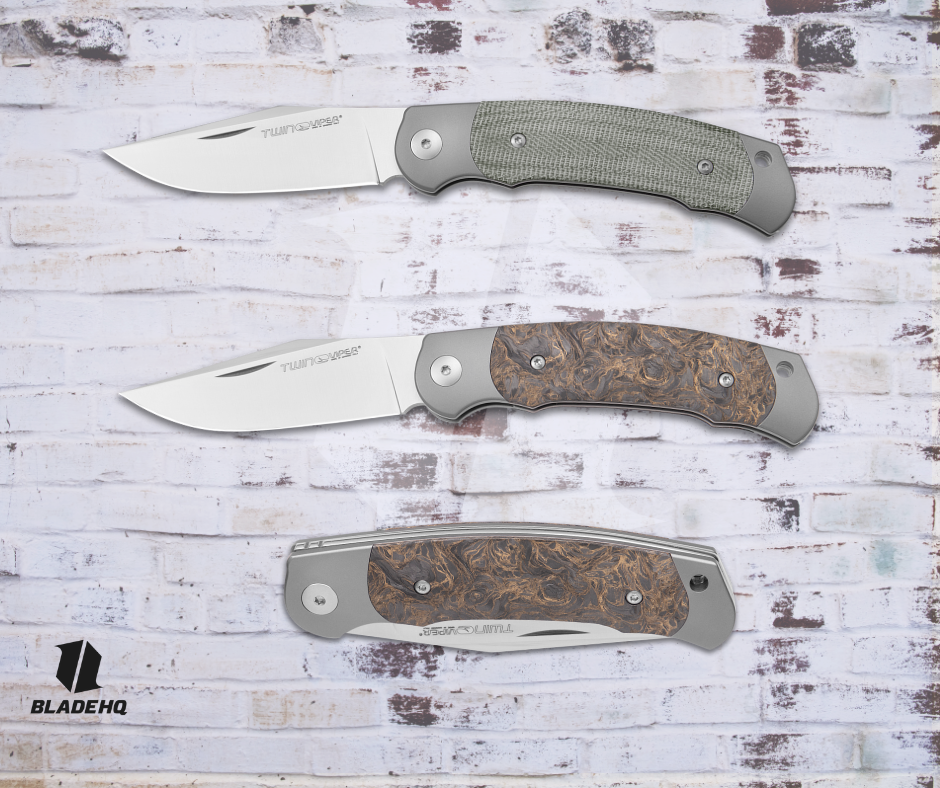
However, it isn’t just exposed knives that need protection. Even a good-looking pocket knife could sometimes use a sheath. A carbon fiber folder doesn’t especially need a knife holster because I don’t think you could find a sheath tougher than what you already have. They use carbon fiber for bullet proof vests, after all. But if you have a custom knife with mother-of-pearl bolsters or gold detail work, then yes, you might need a pocket knife sheath. You may plan to use a different pocket for keys and coins, but one lapse in judgement and your pocket sword suffers for it. Also, if you’re taking that pocket knife on an extended excursion in the great outdoors, you might want to invest in a pouch to keep out the elements from even the most durable pocket knife. The Viper Twin knives are beautiful handmade folders from Italy, and they’re made from the top toughest materials like titanium and Bohler M390 steel, but they do come with leather sheaths.
This all reminds me of the time I had a container of Grape-Nuts spill in my purse and the little particles worked their way into the leather cover of a favorite book, eventually destroying the binding. Of course, you can clean a knife much easier, but you might want to save yourself some trouble. Once again, any fixed blade knife you plan to carry means yes; you need a sheath for your investment. For a pocket knife, a sheath might be smart when you’re roughing it in the woods or if you have a gentleman’s folder.
How Do I Wear a Sheath?
Lots of ways. Most knives come with a sheath from the manufacturer designed to go with your blade, and they have options. If you’re not wild about the sheath made for your knife, you can often buy a better one or even make your own.
Belt
The sheath often can attach vertically to your side, or horizontally to the front or back. If wearing at your side, many place the knife holder on the opposite side of the hand they favor. It’s sometimes easier to reach across your body then to bend your arm to unsheathe your blade.
Neck
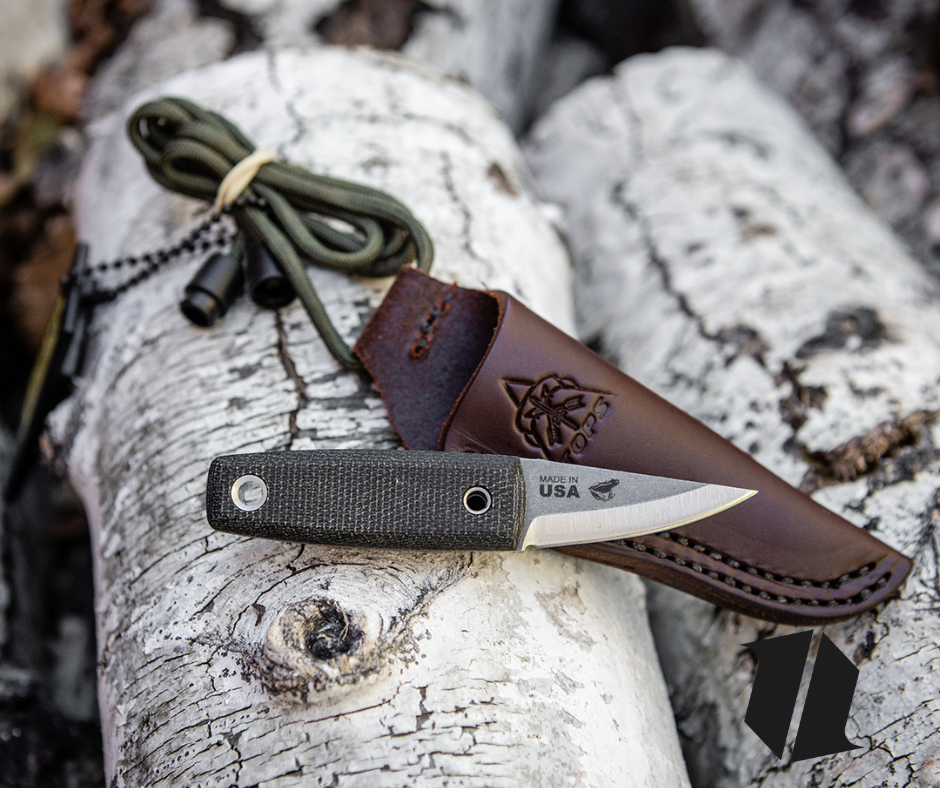
A smaller blade can be worn with a sheath on a chain around your neck. Easily concealed, easily accessed–if you want a trusty companion at your fingertips, a neck knife might be your best choice.
Pack
If you have a tactical bag with a chest panel, soldiers tend to strap their knives right there. Backpacks or hiker’s gear usually have straps or clips where you can easily attach a knife. Some knife users will carry a smaller blade on their person and the larger bushwacking blade on their pack.
Ankle
Like the neck knife, the ankle or boot knife will tend to be smaller and lighter, though not always! These knives are best for quick access, a degree of concealment, and a last-defense weapon. Usually, the knife has a cuff for your ankle, or is meant to clip on the inside of your boot. Please check your local carry and concealment laws before choosing this or any knife.
Customizing
Also, be aware you can find multiple ways to customize your existing sheath. For instance, we have sheath mounting accessories available to adjust your knife position to your own preferences.
What Material Is Best for Knife Sheaths?
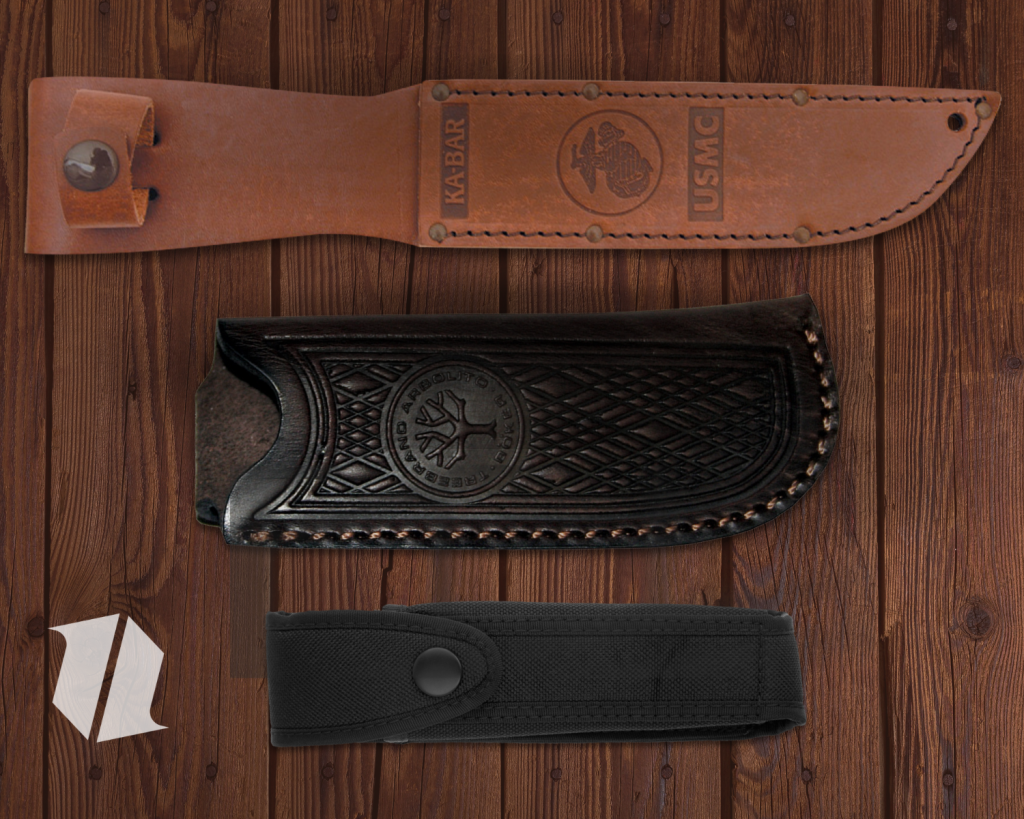
Leather
I admit it, I’m old-school. I like the look, the feel, and the function of a leather sheath. It seems real and not like you’re a kid playing with the police officer plastic toy set you got for Christmas. The material hugs your knife and doesn’t scratch up or dull your blade. However, you want your knife holder to be made of top-quality leather. There’s nothing wrong with chrome tanned leather for most purposes. Overall, it’s considered more durable. Unfortunately, it’s not great for knives, though, and you’re better off with the old-fashioned vegetable tanned leathers because they don’t have the salts used in chrome, which can lead to corrosion of your blade.
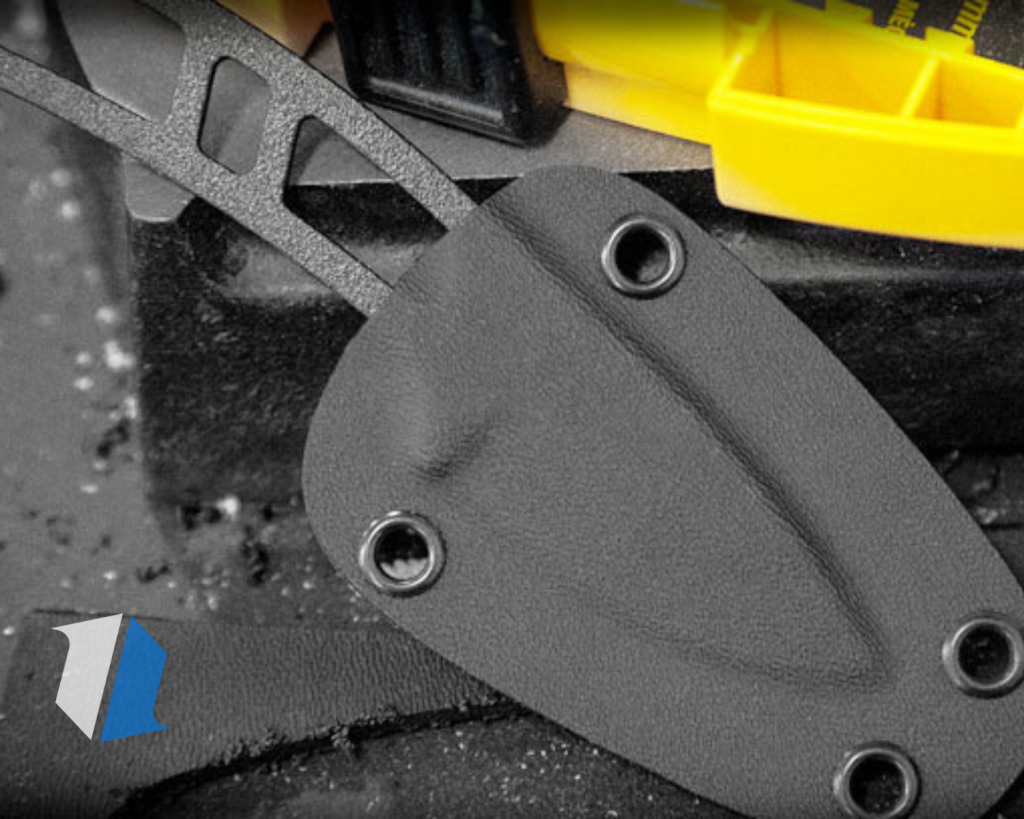
Kydex
Kydex is a wonderful choice because it can be heated and formed to fit your knife perfectly, which means no knife scratching or damage. But it needs to be a good fit, or the knife won’t fare as well. Kydex can be more expensive, but did you know you can make your own? Here’s an old blog with instructions on how to make a Kydex knife sheath.
Plastic
Plastic is often softer than kydex, and they are also less expensive. The plastic keeps out moisture, and they’re durable. However, they don’t always hold up in the long run, making it difficult to use, especially if they lose their shape. Also, not great on your knife having an ill-fitting holder.
Nylon
Nylon is also an excellent choice because it’s not going to damage you blade. However, it’s also flexible enough that your blade could end up cutting and damaging the sheath if you’re not careful. Speaking of, I’m a bit in love with the sheaths that come with the Demko Freereign because you’ve got a heavy-duty polymer shell that encases a nylon core that won’t dull your knife, yet you still have the harder material for durability. It also unscrews apart for cleaning. How cool is that? The Freereign is also a pretty great knife all on its own. I’d take it on the toughest camping adventure.
Knife Covers, Holsters, and Scabbards
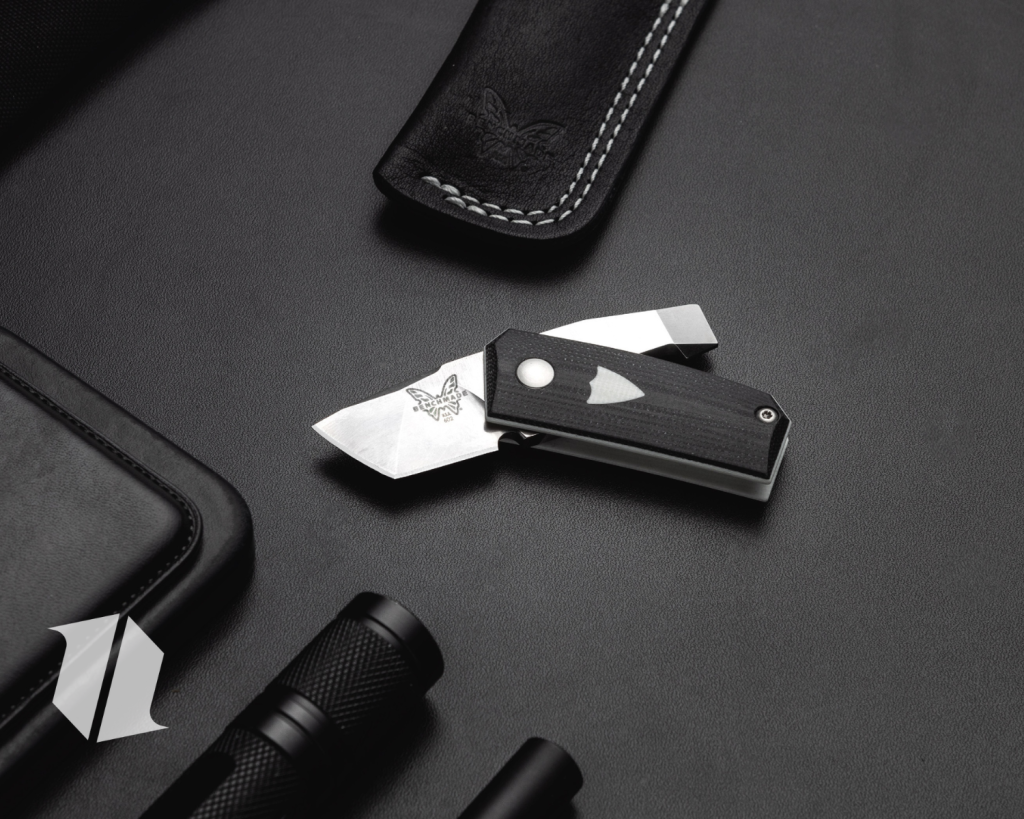
A knife cover usually looks like a sleeve. I know of people who make their own to store their knives when they’re not wearing them, especially if they live in a wet climate and are worried the sheath will trap moisture. A cardboard sleeve can be enough in some instances, or a nylon mesh envelope.
A holster is the same thing as a sheath, though sometimes they can look a bit like a gun holster. The important thing is to have whatever you choose fit well so your knife isn’t rattling around in there and losing sharpness.
Scabbards tend to be for bigger knives and swords, and they are usually crafted from a more rigid material like wood or a tough polymer. Often, however, the term is used interchangeably with “sheath.” (While we’re talking terms, did you know you add an “e” when you use the word as a verb? You sheathe your blade. I know, only I find this cool. But knife people should know these sorts of things.)
Conclusion
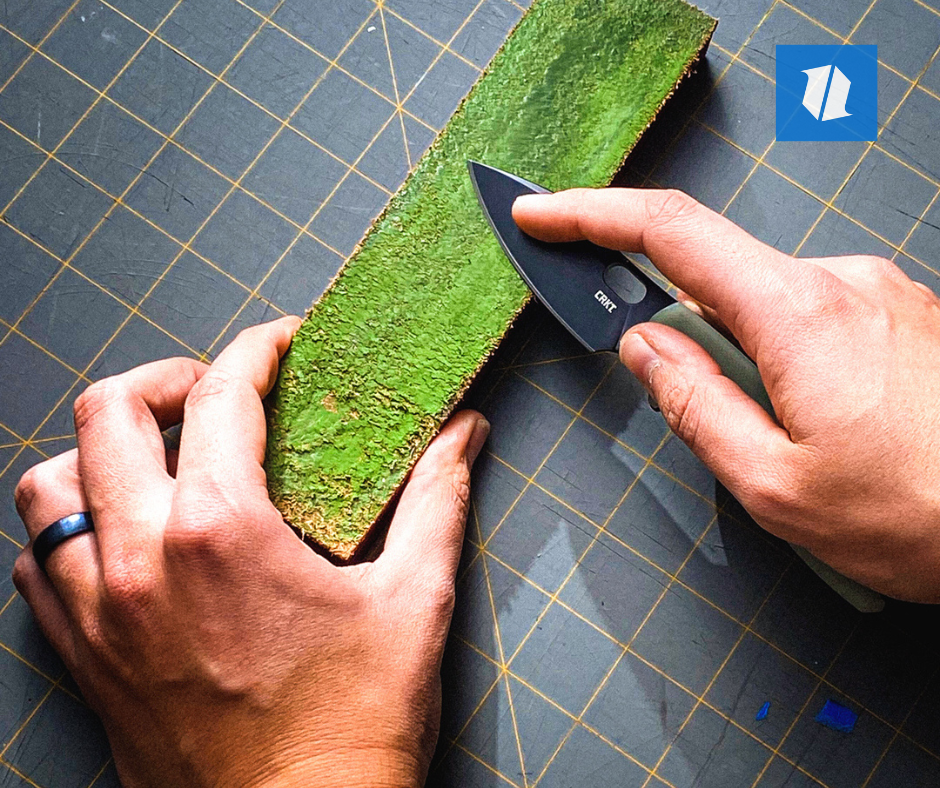
In the end, how you choose to carry your blade will depend a lot on your personal preference. If you go with leather, I recommend using a special conditioner occasionally to keep moisture out. For leather and all other materials, check over your sheath throughout usage and make sure it doesn’t need a little cleaning or eventual replacement.
Take care of your blade, and your blade will take care of you.



